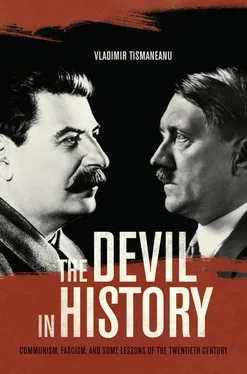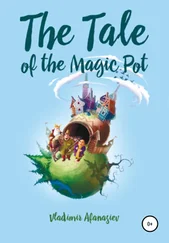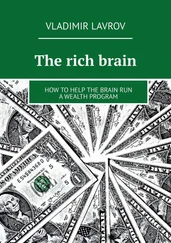The most important conclusion to draw from the comparison of terror dynamics in the two cases is that both regimes (radical Leninism or Stalinism and Nazism) were genocidal. Norman Naimark excellently describes this reality: “The two great tyrannies of the twentieth century simply share too much in common to reject out of hand attempts to classify and order them in the history of political systems and genocide.” 116Analytical distinctions between them are certainly important, but their common contempt for the bourgeois state of law, human rights, and the universality of humankind, regardless of spurious race and class distinctions, is in my view beyond doubt. Any student of the “age of extremes” would have to acknowledge that Leninism contained all the political and ideological ingredients of the totalitarian order (the party’s monopoly on power, ideological uniformity and regimentation, censorship, demonization of the “people’s enemy,” a besieged fortress mentality, secret police terror, concentration camps, and, no less important, the obsession with shaping the “New Man”). To paraphrase Dan Diner, Communism and National Socialism, because of the terrible crimes they committed, “embedded themselves in the memory of the twentieth century as twins of terror.” 117
For totalitarian experiments to be successful, terror and ideology are mandatory instruments for exerting power. A statement by Boris Souvarine, the author of a path-breaking and still impressively valid biography of Stalin published in the mid-1930s, perfectly encapsulates the convergent nature of Communism and Fascism: “In the early years of the Russian Revolution, it was easy to put everything down to the idea of ‘Slavic soul’; yet the events that were reputed to be exclusively Slavic phenomena have subsequently been witnessed in Italy and Germany. When the beast in man is unleashed, the same consequences are visible everywhere, irrespective of whether the man in question is Latin, German, or Slav, however different he may appear on the surface.” 118The cold pathological rationality of the Nazi war on the Jews, including the use of mass murder technologies at Auschwitz and the other death factories, could not be anticipated by the Marxist apostate Boris Souvarine in this diagnosis written in 1937. Nevertheless, he was right in regarding the strange blending of barbarism and derailed modernity in the ideological despotisms of the extreme Left and Right.
Again, comparing the two absolute disgraces of the twentieth century, the gulag and the Holocaust, often leads to misunderstandings and injured feelings among victims of one or another of these monstrosities. This is regrettable because, in all fairness, none of these experiences will ever be remembered enough. Yes, as Alain Besançon points out, there is a kind of amnesia regarding the Communist crimes, just as there is a hypermnesia in relation to the Shoah. 119But as the French historian shows, this is not because there is an attempt by one group to monopolize the memory of suffering in the twentieth century. The origins of this phenomenon are to be sought after in the fact that Communism was often regarded as progressive, anti-imperialist, and, more important still, anti-Fascist. Communism knew how to pose as the heir to the Enlightenment, and many were duped by this rationalistic and humanistic pretense. So, in my view, the research agenda initially suggested by The Black Book presupposed a rethinking not only of Communism and Fascism but also of their opposites, anti-Fascism and anti-Communism. In other words, not all those who resisted Hitler were friends of democracy, and not all those who rebelled against Lenin, Stalin, Mao, or Castro were bona fide liberals. The Black Book forced many in France, Germany, the United States, and, if it need be recalled, East-Central Europe to admit that those “who told of the marvels of the Soviet Union served to legitimize the massacre of millions…. [They] fooled their own societies into seeing the millions of corpses as a great promise for a better future.” 120The uproar caused by The Black Book helped bring to the fore the need both for remembrance of Communism’s crimes and for reassessment of the massive killing and dying perpetrated by so many regimes in the name of this ideology with the endorsement of those who preferred to keep their eyes and ears firmly shut. 121
As far as the anamnesis of Leninist violence, one fundamental problem is that the subjects of trauma mostly belong to social categories rather than national, ethnic ones (as in the case of the Holocaust). This issue is directly connected with the difference discussed above: Communism was at war with its own society. Even under its most moderate avatars (Kádár’s Hungary, Gorbachev’s USSR, or contemporary China), when a section of society threatened the existence of the system, the repressive (quasi-terroristic) levers were activated to isolate and extirpate the “pest hole.” Under the circumstances, Diner’s framing of the dilemma is noteworthy: “The memory of ‘sociocide,’ class murder, is archived, not transmitted from one generation to another as is the case with genocide…. How can crimes that elude the armature of an ethnic, and thus long-term, memory be kept alive in collective remembrance? Can crimes perpetrated not in the name of a collective, such as the nation, but in the name of a social construction, such as class, be memorialized in an appropriate form?” 122It was often the case that such a query was solved through the artificial creation of “ethnic armature.” In the former Soviet bloc, Communism was sold as mainly a Russian import, while local leaders fell into a vaguely defined category of collaborators or “elements foreign to the nation.” It was just a step from the last coinage to the rejuvenation of the old specter of Zydokomuna. But the crux of the problem is that, despite the efforts of Courtois and the other authors of the Black Book , a unitary death tool might be possible but a collective, transnational memory of Communism’s crimes does not exist. In the early twenty-first century, through the various pan-European documents that have been adopted by the European Union or the Organisation for Security and Co-operation in Europe, the first steps in this direction have been made. The Leninist experiment (that is, the world Communist movement) dissolved into national narratives of trauma and guilt upon the ideology’s extinction. Terror and mass murder seem to still keep Communist states separated in terms of both memory and history. And considerable challenges remain in integrating the massive trauma caused by Communist regimes into what we call today European history.
The problem is that most of the crimes are also crimes of national Communist regimes; that is to say, the gulag (I use the term here as a metaphor for all mass terror under Communism) is also a fratricide. Additionally, these regimes endured for more than a score of years, as they domesticized and entered into a post-totalitarian phase. How to measure accomplished lifetimes against stolen ones? One possible solution is to accept the fact that Leninism is radical evil , so that its crimes can be universally (or continentally) remembered and memorialized. This way, unilateral appropriation of trauma, ethnicization of terror, and collective silence can be prevented. Each individual case could maintain its specificities but would, at the same time, be part of a larger historical phenomenon, thus being assimilated to public consciousness. The authors of the Black Book condemned what they considered both an institutionalized and informal amnesia about the true nature of Communist regimes. Their accounts were supposed to provoke the necessary intimacy and ineffability for a sacralized memory of the gulag. Since then, some headway has been made along this path, but European identification with sites of its memory (in various countries) is still pending. 123We should not forget that in 2000, in Stockholm, during the international conference on the Holocaust (commemorating fifty-five years since the liberation of Auschwitz), the participants stated that “the normative basis of a transnational political community is defined by exposing and remembering inhuman barbarism, cruelty and unimaginable humiliation, which are unthinkable on the background of our collective existence.” To paraphrase Helmut Dubiel, the traumatic contemplation of absolute horror and of the total miscarriage of civility legitimizes an ethics that goes beyond the border of any individual state. 124
Читать дальше












